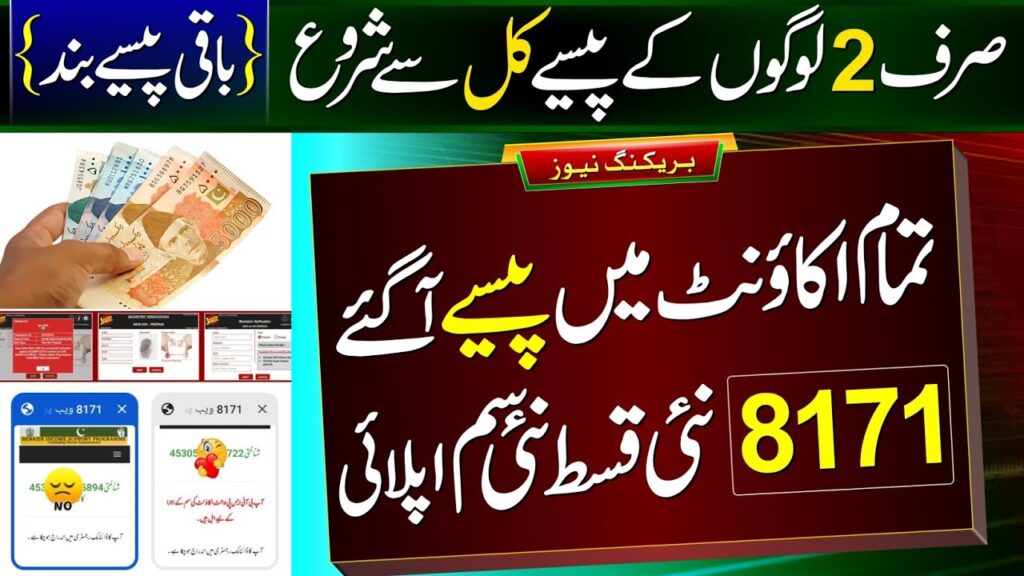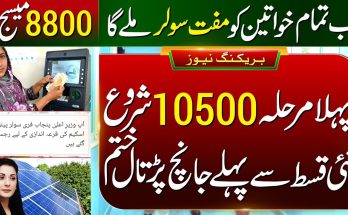Pakistan’s largest social protection initiative, the Ehsaas Program, has continued to evolve with every passing year. As 2026 begins, new updates, reforms, and expansion strategies are making headlines once again. The program, which was originally launched to support low-income families, has now transformed into a more structured, digital, and transparent welfare ecosystem. The latest updates coming in 2026 aim to reach more households, simplify the registration system, and bring financial relief to millions affected by inflation, unemployment, and rising economic challenges. Ehsaas Program New Update 2026 – A New Chapter of Social Welfare in Pakistan
In this article, we break down the Ehsaas Program New Update 2026, its new features, eligibility changes, payment procedures, and how this year’s improvements aim to benefit families across Pakistan.
A Quick Look Back – The Purpose Behind Ehsaas
The essence of the Ehsaas Program has always been to support those who struggle the most. Whether it’s widows, daily wage earners, disabled individuals, or families with unstable income, the program was designed to bring financial assistance where it matters. Over time, various sub-initiatives—such as Ehsaas Kafalat, Rashan Program, Undergraduate Scholarship, Emergency Cash, and Langar Khana—expanded the program’s reach.
But with inflation hitting record highs and cost of living increasing for every household, 2026 demanded a stronger, more dynamic approach. That is exactly what this year’s update brings.

Major Highlights of Ehsaas Program New Update 2026
The 2026 update comes with several new features and structural reforms that aim to make the program more impactful:
- A Bigger Budget Allocation
For the first time, the funding for the Ehsaas Program has been increased significantly. This larger budget promises:
More beneficiaries added from waiting lists
Higher financial assistance for the Kafalat and Ration programs
Additional funds for scholarships and technical training
The expansion suggests that the government is serious about reducing the economic strain on low-income households.
- Updated Eligibility Criteria
One of the most important changes in the 2026 update is the revised eligibility system. Previously, many families were excluded due to outdated surveys. This year:
A new dynamic NSER survey has been launched
Households can update information at any time
Eligibility is now based on real-time income and family conditions
A mobile app update allows individuals to check their eligibility status instantly
The goal is simple: make sure assistance reaches the right people at the right time.
- Increase in Ehsaas Kafalat Stipend
The Ehsaas Kafalat Program has always been the backbone of financial support for women-led families. In the 2026 update:
The quarterly stipend has been increased
Payment schedule has been expanded to ensure timely distribution
Biometric verification has been made more user-friendly
The new amount helps women better manage household expenses in the face of rising prices.
- Expansion of Ehsaas Rashan Subsidy
The Ehsaas Rashan Program continues to be a lifeline for thousands of families trying to keep up with rising grocery costs. This year:
More items have been added to the subsidized list
Subsidy amounts have been increased
Grocery stores in remote villages are being newly registered
QR code–based verification will reduce fraud and delays
Families can receive a significant discount on essential food items like flour, ghee, and pulses.
- Strengthening Digital Verification Systems
To address past complaints about delays, duplicate applications, and confusion during verification:
A stronger digital tracking system is now in place
Mobile number verification has been linked to NADRA
Beneficiaries can check payment status through the updated Ehsaas portal
These upgrades mean less waiting, fewer visits to offices, and minimal chances of error.
Ehsaas Registration Process Made Easier in 2026
The Ehsaas Program has often faced criticism for long queues, slow processing, and lack of guidance. The 2026 update attempts to solve these problems through:
Online Registration Portal (Revamped)
The web portal has been redesigned with:
A simpler interface
Support for Urdu and regional languages
Step-by-step registration instructions
Instant eligibility checking
Mobile App Upgraded
The Ehsaas App now includes:
CNIC verification
Payment history
Complaint registration
Digital surveys
SMS Registration System Improved
The classic 8171 SMS service remains functional but now offers:
Faster responses
More accurate eligibility results
Automatic integration with NADRA databases
Dynamic Survey Centers Nationwide
Families can now visit designated registration centers in their cities to update household data. These centers support:
Widow registration
Child education verification
Income updates
Disability certification
New Ehsaas Initiatives Introduced in 2026
While strengthening existing programs, the 2026 update also introduces new initiatives tailored to modern challenges.
- Ehsaas Rozgar Support
To address unemployment and insufficient income, the new Rozgar Support project offers:
Interest-free loans
Skill development training
Small business support for youth and women
Thousands of individuals in both urban and rural areas are expected to benefit.
- Ehsaas Taleemi Plus Stipend Increase
Education is a major pillar of Ehsaas. In 2026:
Stipends for girls and boys have been increased
Additional bonuses will be given for 80% attendance
College and university-level scholarships have been expanded
This aims to reduce dropout rates and support families struggling with educational expenses.
- Ehsaas Senior Citizen & Disability Special Grant
Elderly citizens and people with disabilities will now receive:
Additional stipend payments
Free medical checkups under Ehsaas Health Cards
Priority processing at registration and payment centers
This update finally addresses long-standing complaints about insufficient benefits for disabled individuals.
Payment Method Changes in 2026
The payment system is also receiving improvements, making it simpler and safer. The new model includes:
Bank Transfer System
Beneficiaries can choose direct bank payments. This reduces:
Long queues
Biometric failures
Chances of corruption
Multiple Cash Withdrawal Points
Cash can now be collected from:
Banks
ATMs
Ehsaas Digital Centres
Designated retail shops with biometric machines
SMS Notification Alerts
Every payment release now triggers automated SMS alerts:
“Payment released”
“Payment collected”
“Eligibility update required”
This brings transparency and trust.
Challenges Ehsaas Hopes to Solve in 2026
The new updates were introduced because Pakistan continues to face economic pressure. Everyday challenges like:
Lower purchasing power
Unemployment
Rising food prices
Slow business growth
Lack of social protection in rural areas
These issues affect the poorest communities the most. The Ehsaas update aims to cushion the impact and help families survive difficult economic conditions with dignity.
Public Reaction to Ehsaas Program 2026
Public response varies, but a few common observations include:
Many appreciate the increased financial support
The new digital systems are seen as a positive step
Beneficiaries find the updated online portal more reliable
Complaints of biometric failures still exist but are fewer
People hope for even faster processing in the future
Overall, the sentiment is that the changes are moving in the right direction.
The Future Vision – What Ehsaas Aims to Achieve Beyond 2026
Looking ahead, the program’s long-term goals include:
Bringing every low-income family under social protection
Using AI-powered data verification to speed up surveys
Providing skill-based training and job creation support
Expanding subsidies to cope with inflation
The vision is to shift from simple cash-based aid to creating sustainable economic opportunities for families.
Conclusion
The Ehsaas Program New Update 2026 marks an important milestone in Pakistan’s welfare system. With increased stipends, improved digital systems, easier registration, and expansion of new projects, the update demonstrates a serious effort to support low-income families struggling in challenging economic times. While there is always room for improvement, the new reforms show that social protection remains a top priority.
Millions of families will benefit from these changes, and if implemented effectively, the program will continue to bring hope, stability, and financial relief to households across the country.



